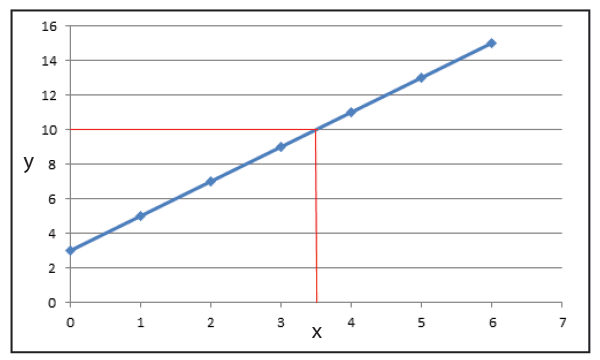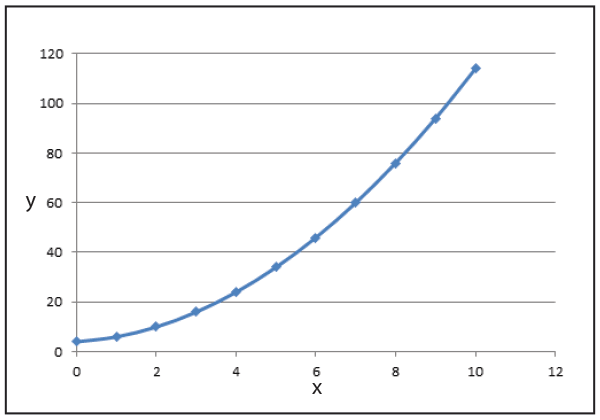Introduction to Algebra
See also: Set TheoryMany people think that equations and algebra are beyond them - the thought of having to work with equations fills them with fear. However, there is no need to be afraid of equations.
The good news is that equations are actually relatively simple concepts, and with a bit of practice and the application of some simple rules, you can learn to manipulate and solve them.
This page is designed to introduce you to the basics of algebra, hopefully making you feel more comfortable solving simple equations.
What is an Equation?
An equation is two expressions on either side of a symbol that indicates their relationship.
That relationship may be equals (=), less than (<) or greater than (>), or some combination. For example, less than or equal to (≤) or even not equal to (≠) or approximately equal to (≈) These are known as equality symbols.
Simple equations therefore include 2 + 2 = 4 and 5 + 3 > 3 + 4.
However, when most people talk about equations, they mean algebraic equations.
These are equations that involve letters as well as numbers. Letters are used to replace some of the numbers where a numerical expression would be too complicated, or where you want to generalise rather than use specific numbers. They can also be used when you know the values in part of the equation, but others are unknown and you need to work them out.
Algebraic equations are solved by working out what numbers the letters represent.
We can turn the two simple equations above into algebraic equations by substituting \(x\) for one of the numbers:
2 + 2 = \(\boldsymbol{x}\)
We know that 2 + 2 = 4, which means that \(x\) must equal 4. The solution to the equation is therefore \(\boldsymbol{x}\) = 4.
5 + 3 > 3 + \(\boldsymbol{x}\)
We know that 5 + 3 = 8. The equation tells us that 8 is greater than (>) 3 + \(x\).
We need to rearrange the equation so that \(x\) is on one side and all the numbers are on the other, otherwise we can’t find the value of \(x\). The rule of rearranging equations is what you do to one side, you must also do to the other. There is more on this below.
Take 3 away from both sides (8 − 3 = 5) , then the equation becomes
5 > \(\boldsymbol{x}\)
We can see that \(x\) must be less than 5 (\(x\) < 5).
We cannot say more precisely what \(x\) is with the information that we are given. However, in the initial equation that we used as our example, we substituted 4 for \(x\), which is indeed less than 5.
There is no magic about using a curly 'x' (\({x}\)). You can use any letter you like, although \({x}\) and \({y}\) are commonly used to represent the unknown elements of equations.
Variables and constants
A letter used to substitute for a number in algebra is called a variable, because it stands for different numbers each time you use it.
This is different from a particular letter which is always used to substitute for the same number, such as \(\pi\) (pi) which is always 3.142. Such a letter is called a constant.
In an algebraic equation, any given numbers are also constants, because they always stay the same.
If you are required to solve an equation involving a constant, you will always be told its value.
Terms of an Equation
A term is a part of the equation that is separated from other parts, usually by an addition (+) or subtraction (−) symbol.
A group of terms is called an expression, rather like a mathematical sentence or description. Some mathematical expressions can look quite scary, full of numbers and letters, some of which might even be Greek. However, the key is to look at each term separately, and break it down into things that you know or that you can work out. If you do this, you will begin to understand that it isn’t always as hard as you first thought.
Terms may be just numbers, or they may be just letters, or they may be a combination of letters and numbers, such as 2\(\boldsymbol{x}\), 3\(\boldsymbol{xy}\) or 4\(\boldsymbol{x}\)2.
In a term involving letters and numbers, the number is known as the coefficient, and the letter is the variable. The coefficient is simply a ‘multiplier’ – it tells you how many of something (the variable) you have in that term.
Terms that have exactly the same variable are said to be like terms, and you can add, subtract, multiply or divide them as if they were simple numbers. For example:
The equation 2\(x\) + 3\(x\) is equal to 5\(x\), simply 2 lots of \(x\) plus 3 lots of \(x\) to make 5 lots of \(x\) (5\(x\)).
$$5xy – xy = 4xy$$ $$5y × 3y = 15y^2$$You cannot add or subtract 'unlike terms'. However, you can multiply them by combining variables and multiplying the coefficients together.
So, for example, 3\(y\) × 2\(x\) = 6\(xy\) (because 6\(xy\) simply means 6 times \(x\) times \(y\)).
You can divide unlike terms by turning them into fractions and cancelling them down. Start with the numbers, then the letters.
So, for example:
\(\large{6xy ÷ 3x}\)
| $$\frac{6xy}{3x}$$ | = | $$\frac{2xy}{x}$$ | = | $$\frac{2y}{1}$$ | = | $$2y$$ |
| Divide top and bottom by 3 |
Divide top and bottom by x |
The 1 can be ignored because anything divided by 1 is itself |
Rearranging and Solving Equations
In many cases to solve an equation you will probably need to rearrange it. This means that you need to move the terms about so that you end up with only terms involving \(x\) on one side of the equality symbol (such as =, >, or <) and all the numbers on the other.
This process is sometimes called isolating \(x\).
You can rearrange equations through a set of simple rules:
Whatever you do to one side of the equation, you must do the same to the other. That way you preserve the relationship between them. It doesn’t matter what you do, whether it’s take away 2, add 57, multiply by 150, or divide by \(x\). As long as you do it to both sides, the equation remains correct. It can help to think of your equation as a set of scales or a see-saw, which must always balance.
-
Our page on Addition explains that it doesn’t matter what order you add in, the answer is still the same. This means that you can rearrange the expression to put the like terms together and make it easier to add up. This applies to Subtraction too, as long as you remember from our page on Positive and Negative Numbers that subtracting is the same as adding a negative number. So, for example, 10 − 3 = 10 + (-3).
Equations work according to BODMAS too, so remember to do the calculation in the right order.
- Always get your equation into the simplest possible form: multiply out brackets, divide down, cancel out fractions, and add/subtract all the like terms.
Worked Examples:
Try to solve these equations for \(x\), click on the boxes to reveal the workings and answers.
- As with any calculation, do the multiplication first. 5 × 4 = 20
- So \(x\) + 3 = 20
- The next step is to take three away from both sides
- \(x\) + 3 - 3 = 20 - 3
- 20 - 3 = 17.
This leaves you with the answer: \(x\) = 17
- Do the calculation on the right hand side first, because it doesn’t involve any letters. There are no brackets, so it’s multiplication first, then addition.
- 6 × 5 = 30, and 30 + 3 = 33.
- The calculation on the left is an addition one, so you can move the terms about, until you have all the numbers together:
5 + \(x\) + 21 = \(x\) + 5 + 21
and 5 + 21 = 26. - So now you have 26 + \(x\) = 33
- Now you can take 26 away from both sides
- 26 + \(x\) − 26 = \(x\) = 33 - 26
- And 33 - 26 = 7.
Therefore \(x\) = 7
- Rearrange to get all the numbers on one side, by taking five away from each side.
- Now you have
\(x\)2 = 13 − 4 − 5, so - \(x\)2 = 4
- Now you need to take the square root of both sides, because you want to find the value of \(x\) and not \(x\)2.
- You know that 2 × 2 = 4, which means that the square root of 4 = 2
\(x\) = 2
Equations and Graphs
Any equation in which there is a relationship between just two variables, \(x\) and \(y\), can be drawn as a line graph where \(x\) goes along the horizontal axis (sometimes called the x-axis) and \(y\) on the vertical axis, (sometimes called the y-axis).
You can work out the points on your graph by solving the equation for particular values of \(x\).
Examples:
\(\large{y = 2x + 3}\)
| \(x\) | 0 | 1 | 2 | 3 | 4 | 5 | 6 |
| calc | 2(0) + 3 | 2(1) + 3 | 2(2) + 3 | 2(3) + 3 | 2(4) + 3 | 2(5) + 3 | 2(6) + 3 |
| \(y\) | 3 | 5 | 7 | 9 | 11 | 13 | 15 |

The advantage of drawing a graph of an equation is that you can then use it to work out the value of \(y\) for any given value of \(x\), or indeed \(x\) for any given value of \(y\), by looking at the graph.
In this example what is the value of \(x\) when \(y\) = 10?
Move up the y-axis until you reach 10, then across horizontally until you reach the line on the graph. At that point, move downwards until you reach the x-axis. This is shown by the red lines on the graph and you can see that when \(y\) = 10, \(x\) = 3.5.
\(\large{y = x^2 + x + 4}\)
When \(x\) = 0, \(y\) = 0 + 0 + 4 = 4
when \(x\) = 1, \(y\) = 1 + 1 + 4 = 6
when \(x\) = 2, \(y\) = 4 + 2 + 4 = 10
and so on...
| \(x\) | 0 | 1 | 2 | 3 | 4 | 5 | 6 | 7 | 8 | 9 | 10 |
| \(y\) | 4 | 6 | 10 | 16 | 24 | 34 | 46 | 60 | 76 | 94 | 114 |

Extrapolate
Another advantage of plotting your equation on a graph is that you can extrapolate your data (numerical information) to work out bigger values of \(x\) or \(y\). Extrapolating means that you extend your graph by continuing the line you have drawn from your data, to estimate values of \(x\) and \(y\) beyond the range of data that you already have.
In the first example, the equation produces a straight line, so extrapolating this graph is straightforward. However, care is needed when extrapolating a graph that isn't a straight line, such as in the second example.
Further Reading from Skills You Need
Data Handling and Algebra
Part of The Skills You Need Guide to Numeracy
This eBook covers the basics of data handling, data visualisation, basic statistical analysis and algebra. The book contains plenty of worked examples to improve understanding as well as real-world examples to show you how these concepts are useful.
Whether you want to brush up on your basics, or help your children with their learning, this is the book for you.
In Conclusion
This page has explained how to solve simple equations, and the relationship between equations and graphs, giving you an alternative way to solve equations.
You are now ready to move onto more complex equations, including simultaneous equations and quadratic equations.


